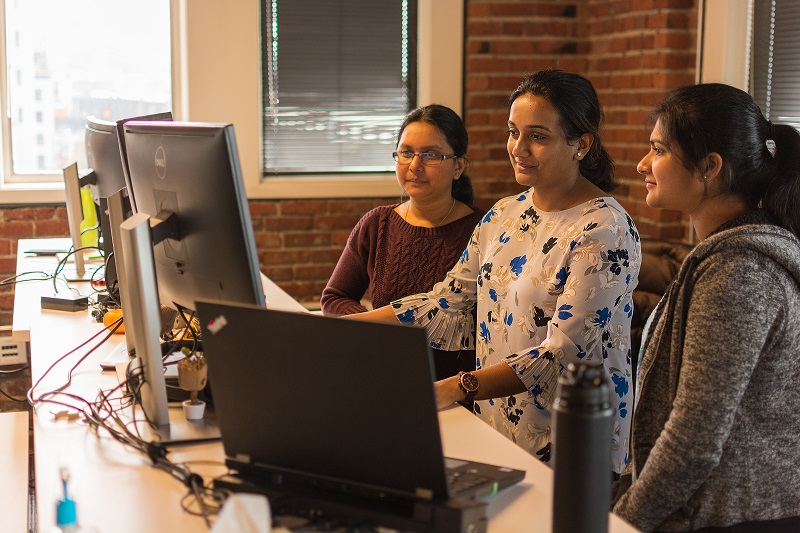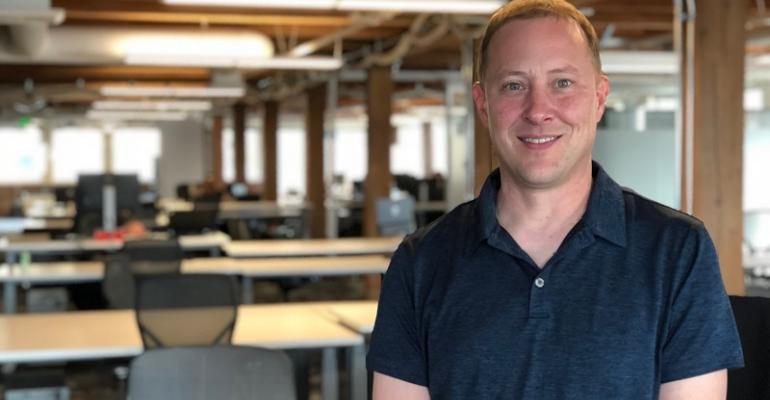DETROIT – Mike Dosenbach, who leads the recently created Mercedes-Benz Digital Hub in Seattle, makes no bones about it: His group responsible for driving cloud technologies and new computing paradigms for Daimler’s luxury-car unit needs software experts, posthaste.
“I need to hire another 80 people by the middle of next year, so if anyone is interested look me up on LinkedIn,” he tells Wards in an interview here during the ITU/SAE conference on connected vehicles. “I don’t how blatant a plug I can make. We are hiring at every level.”
The German automaker is not alone. OEMs and suppliers around the world are scrambling for software experts to write the code to not only drive autonomous vehicles and underpin new forays into mobility services, but also to transform their businesses into fully digital enterprises.
Daimler considers its digital transformation the single greatest enrichment to its operations since the invention of the automobile. It expects the digitalization will affect every corner of its business from how it plans, engineers and manufactures its vehicles to how it interacts with its customers, partners and products.
In short, Daimler wants to use digital services to make the daily lives of its customers and employees easier. For example, Daimler’s Moovel unit is tasked with reshaping urban mobility, while its in-house social network Daimler Connect provides employees with tools and information to help them shape the company’s digital future.
Dosenbach’s group in Seattle, which expects to have a staff of 150 employees by 2019, is playing a leading role in the development of back-end software while a complementary group newly installed in Berlin will handle front-end work.
Think of any vehicle feature that may require activation, such as a subscription service, and that is what his group handles. Mercedes Me, for example, gives owners access to their vehicle and personal preferences while away from their car.
Looking ahead, the Seattle group will be developing software for non-safety-critical elements of autonomous vehicles.
“Computational power is an order of magnitude cheaper in the cloud than it is in the car,” says Dosenbach, a Michigan native and fourth-generation automotive professional who came to Daimler after stints as a software engineer at Amazon and cloud-computing startup Okta.
“Automotive-grade computing is very, very expensive,” he adds. “Anything that requires sub-10-millisecond response time has to be done in car but other things, such as route planning, can be done on the back end. And with the 5G and 6G technologies coming out, you can make those connections to the back end without any noticeable lag.”
Daimler Bringing Software In-House
But bigger picture, the Seattle group will bring software development now outsourced nearly entirely into the company.
“Bringing the strategically important software development in-house increases the level of innovations, decreases time to market and increases the feeling of ownership for the employees,” says Dosenbach, who opened the Seattle office as its first employee a year ago.
The group also will move Mercedes-Benz vehicles from the data center to the cloud. The back end for its connected-car technologies presently resides in three data centers worldwide, which causes latency. But using the cloud puts its technologies closer to the consumer.
“We also gain a lot of advantage because of the basic abilities of the cloud. You can scale your systems much easier than in a data center,” he says. In fact, you can have it auto-scale to handle a sudden load, and when it goes back down it decreases, so you’re not taking on additional long-term costs.”
There are tools within the cloud to develop software more quickly, too, which speeds Mercedes-Benz innovation to market. Dosenbach cites containerization as one recent development. Containerization puts small chunks of code inside a container and that handles interactions between the code, operating system, hardware and the network.

Inside Mercedes-Benz Digital Hub.
Management of the containers, or what to keep and what to discard, is handled by tools such as Google Kubernetes, leaving software developers to focus on innovation rather than housekeeping.
“All we have to worry about is our business logic and we can utilize all these built-in cloud capabilities to handle everything else,” Dosenbach says. “All of our time is spent on things that add value to the customer.”
Containerization has a role within the car, too. For example, if Mercedes-Benz wants to perform a software update to the head unit of a line of vehicles in the field, it must update the entire application. But if it could be done piecemeal, or container-by-container, over-the-air updates could be deployed more frequently.
“That allows us to get functionality to the customer sooner, because we don’t have to wait for one big release,” Dosenbach says. “It’s like the apps on your phone. We need to do the same, conceptually, in the car to keep driving value even after the car purchase.”
Turning the Battleship Starts at the Top
Dosenbach admits Daimler’s digital transformation will be a massive undertaking and says he even harbored some reservations about joining such a mature company. But he says it offers the best of both worlds: A century of technological leadership and a pace of change equivalent to a startup.
As evidence he points to the installation of Ola Kallenius as CEO to replace Dieter Zetsche, who moves on to the role of company chairman. Kallenius previously ran Daimler R&D and although his background is in finance, he is considered among the automaker’s most tech-savvy executives.
Sajjad Khan also is elevated from vice president of digital vehicle to the company board. He will supervise both digital vehicle and activities around connectivity, autonomy, subscription/sharing and electrification.
Leadership 2020 also is driving change within Daimler and Mercedes-Benz. A 2-year-old corporatewide initiative, Leadership 2020 works on strategic projects to kickstart cultural change at the automaker, including employee development, organizational structure, work methodology and tools.
“It’s all a signal of how the company not only wants to change but has to change,” Dosenbach says. “R&D is nothing new to Mercedes. We’re always trying to stay at the front of technological change. We’ve had connected vehicles for a decade and a half, but now we have got to get them using modern software.
“Between Berlin and Seattle, we are the vanguard of that change,” he says.

Autonomous-car software among future R&D work for Mercedes-Benz Digital Hub.
Daimler chose Seattle as a digital hub for Mercedes-Benz in North America because it is home to thousands of software engineers and companies at the forefront of cloud computing, such as Amazon Web Services and Microsoft Azure. Daimler, in fact, uses both platforms.
It is the only OEM with a presence in the city with an office in a newly renovated, 100-year-old building. Exposed brick and original wood beams line the walls and ceilings, juxtaposed against the latest high-tech equipment for software developers to use.
But there are currently more software jobs in Seattle than software experts, a dilemma that has put Dosenbach on a high-speed recruiting track focused on increasing his group’s diversity and inclusivity, as well as headcount.
“We are running ourselves like a startup, where everybody wears multiple hats and things are changing constantly. It’s exciting,” he says. “But you get to go home to your family every night, and, unlike a startup, you know you are getting a paycheck every week.”




